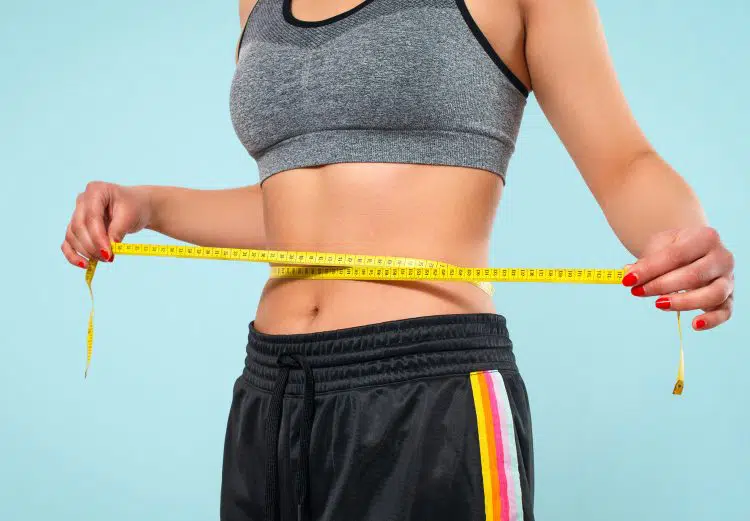It’s hard to believe that CrossFit has been around for over 20 years. In the last two decades, CrossFit has gone from a fitness fad to a bonafide workout phenomenon, with millions of people following the WODs – that’s the workout of the day to non-CrossFitters.
CrossFit has also introduced a lot of interesting exercises to the mainstream fitness community. For example, without CrossFit, very few of us would be doing kipping or butterfly pull-ups, handstand push-ups, box jumps, thrusters, kettlebell swings, sumo deadlift high-pulls, rope climbs, or GHD sit-ups.
And now you can add another CrossFit exercise to your workouts – jumping pull-ups.
In this article, we reveal why and how to do jumping pull-ups and the variations and alternatives you can do instead.
How to Do Jumping Pull-Ups
Get more from jumping pull-ups while keeping your risk of injury to a minimum by following these guidelines:
- Adjust your pull-up bar so that it’s slightly above head height. Reach up and grab the bar with an overhand, shoulder-width grip. Stand with your feet about hip-to-shoulder width apart and brace your abs. Pull your shoulders down and back.
- Keeping hold of the bar, bend your legs until your arms are fully straight.
- Extend your legs and jump upward, simultaneously pulling with your arms.
- Use this momentum to help you pull your chin up and over the bar.
- Control your descent by braking with your arms and back.
- Land as lightly as you can and either release the bar or keep hold of it and transition straight into another rep.
Pro tips:
- Use lifting chalk on your hands to reinforce your grip and prevent your hands from slipping.
- Stand on a low box or step if you cannot comfortably reach your pull-up bar.
- Try this exercise with an underhand grip – a jumping chin-up.
- Use a lower bar so you can squat deeper and increase lower body activation.
- Use a higher bar so you bend your legs less and your arms have to do more of the work.
Jumping Pull-Ups – Muscles Worked
Technically, jumping pull-ups are a compound exercise because they involve more than two muscles and several joints working together. In reality, jumping pull-ups are a full-body exercise because, well, there are very few muscles that they don’t involve!
Level Up Your Fitness: Join our 💪 strong community in Fitness Volt Newsletter. Get daily inspiration, expert-backed workouts, nutrition tips, the latest in strength sports, and the support you need to reach your goals. Subscribe for free!
So, from the ground up, the main muscles trained during jumping pull-ups are:
Triceps surae
Triceps surae is the collective name for your calf muscles. There are two: gastrocnemius and soleus. These muscles work together to point your toes, which is a movement called ankle plantarflexion.
Quadriceps
Located on the front of your thighs, the four quadriceps muscles are the rectus femoris, vastus lateralis, vastus intermedius, and vastus medialis. These four muscles work together to extend your knees, and the rectus femoris is also one of the hip flexors.
Gluteus maximus
The gluteus maximus is the largest and potentially most powerful muscle in the human body, and you’re currently sitting on yours! The main function of the glutes is the extension of the hip, but it also plays a part in external rotation and abduction of the hip.
Hamstrings
The hamstrings are located on the back of your thighs and are responsible for the extension of your hips and flexion of your knees. The three hamstrings are the biceps femoris, semimembranosus, and semitendinosus. The deeper you squat during jumping pull-ups, the more active these muscles are. However, the hamstrings won’t be working as hard as the quads.
Core
Jumping pull-ups involve generating force with your legs and transferring it into your upper body. This requires and develops a strong core, which is the collective name for the muscles of your midsection. The primary core muscles are the rectus abdominis, obliques, and transverse abdominis.
Latissimus dorsi
Known as the lats for short, this muscle is located on the side of your upper back. It’s the muscle that gives your back its width and V-shape taper. The main functions of the lats is shoulder adduction and extension, both of which occur during jumping pull-ups as you pull your arms down and back.
Trapezius and rhomboids
Located across and between your shoulder blades, the trapezius and rhomboids depress and retract your scapulae or shoulder blades to provide a stable platform for your shoulders and arms. The more you pull your shoulders down and back, the more active these muscles will be.
Biceps brachii
Usually known simply as the biceps, this muscle is located on the front of your upper arm and is responsible for bending your elbow. The biceps are probably the most famous muscle in the human body, and even non-exercisers can identify and flex them!
Forearms flexors
The forearm flexors are responsible for clenching your fingers and giving you a firm grip. Jumping pull-ups provide your forearms with a great workout.
Cardiovascular system
The jumping pull-up is a bit of a workout oddity. Not only will it strengthen a long list of skeletal muscles, but it also works your heart and lungs, especially if you do high-rep sets or do it as a part of a HIIT (High-Intensity Interval Training) workout.
Because of this, the jumping pull-up has the potential to build muscle strength, endurance, and power, AND cardiovascular fitness. It could even help you burn fat and lose weight.
Jumping Pull-Up Benefits and Drawbacks
Not sure if jumping pull-ups deserve a place in your workouts? Consider these benefits and then decide!
A full-body workout
It’s probably easier to list the muscles NOT trained during jumping pull-ups than all those that are. In fact, pair this exercise with a few sets of push-ups, and you really do have a full-body workout.
Exercises like jumping pull-ups burn a lot of calories, tax your muscles and cardiovascular system, and make excellent use of your time.
Improve pull-up performance
Full pull-ups are a challenging exercise where you must lift your entire body weight using only your arms. Jumping pull-ups mean you can use your legs to assist your arms. This may be beneficial if you are not yet strong enough to do pull-ups unaided, or you can do a few arms-only reps and want to extend your set beyond failure. Doing sets of jumping pull-ups will help you develop the strength necessary to do the non-jumping version.
Weight loss
Exercises like jumping pull-ups use a lot of muscles and, therefore, burn a lot of calories. If you are trying to lose weight, the more calories you burn per workout, the better your progress will be. Doing jumping pull-ups alongside other high-intensity exercises, such as high-pulls, kettlebell swings, and thrusters, could help you get leaner faster.

Easy to adapt according to your goals
You can change the effect of jumping pull-ups by performing them in a few different ways. For example, if you use a low bar and bend your knees more, you’ll overload your legs.
In contrast, a higher bar with less bent knees means you’ll have to use your upper body more. You can also purposely descend more slowly to overload your lats and biceps or more quickly to reduce their involvement.
As such, you can modify jumping pull-ups to reflect your fitness and current training goal.
While jumping pull-ups are a mostly beneficial exercise, there are also a few drawbacks to consider:
Not the best muscle builder
While jumping pull-ups have the potential to build muscle mass, they’re probably not as effective as doing, for example, pull-ups and squats separately. Doing these two exercises in the same movement makes both of them a little less effective, especially for more experienced exercisers.
High-impact
Jumping exercises like jumping pull-ups involve a lot of impact, which can cause foot, ankle, lower back, and knee pain in some people. That’s especially true if you are a little on the heavy side, land heavily, or have a pre-existing lower limb injury. Reduce the impact of your landings by bending your knees, flexing your ankles, and wearing shock-absorbing shoes.
Equipment issues
To do jumping pull-ups, you need a bar that’s the right height, a box to stand on, or both. Depending on where you train, you may not have the equipment you need to do jumping pull-ups.
8 Jumping Pull-Up Variations and Alternatives
Jumping pull-ups are an effective strength and conditioning exercise, but that doesn’t mean you need to do them all the time, or even at all. There are several variations and alternatives you can use to keep your workouts productive and interesting:
1. Jumping pull-up 2.0
With the standard version of jumping pull-ups, you start each rep already holding the bar. This allows you to use your arms and legs at the same time. This variation is a little different, as you start the movement with your legs, and then your upper body takes over and has to complete each rep alone.
If you have a fixed-height pull-up bar and no box or step, this could be the only way you can do jumping pull-ups.
Steps:
- Stand below a pull-up bar that’s a few inches higher than you can reach. Your feet should be shoulder-width apart.
- Descend into a quarter-depth squat and then leap up into the air.
- Grab the bar with an overhand grip and then pull yourself up so your chin is above your hands.
- Lower yourself down, drop off the bar, land as lightly as possible, and repeat.
Muscles targeted:
- Primary: Quadriceps, hamstrings, gluteus maximus, triceps surae, latissimus dorsi, biceps.
- Secondary: Trapezius, rhomboids, core, forearms.
Benefits:
- A more challenging variation of jumping pull-ups.
- A good exercise for developing stronger, more powerful legs.
- More overload for your upper body as your legs don’t provide as much assistance.
Tips:
- Chalk your hands to prevent slipping from the bar.
- Make sure you can comfortably reach the bar. Missing it could lead to failed reps and injury.
- Wear shock-absorbing shoes, as this is a very high-impact exercise.
2. Burpee jumping pull-up
While the burpee jumping pull-up probably won’t add slabs of muscle to your frame, it will leave you in a puddle of sweat and puffing like an old steam train! This exercise is VERY full-body and leaves no muscle untrained. It’s a time-efficient and effective conditioning exercise, albeit a very tough one.
Steps:
- Stand below your pull-up bar with your feet about hip-width apart.
- Squat down and place your hands flat on the floor.
- Jump your feet out and back into the push-up position, and do one push-up.
- Jump your feet back into your hands and then leap upward and grab the pull-up bar with an overhand, shoulder-width grip.
- Pull your chin up and over the bar, and then lower yourself back down.
- Drop to the floor, squat down, and repeat.
Muscles targeted:
- Primary: Quadriceps, hamstrings, gluteus maximus, triceps surae, latissimus dorsi, biceps, pectoralis major, deltoids.
- Secondary: Trapezius, rhomboids, core, forearms.
Benefits:
- A true full-body exercise.
- A very demanding movement that’s ideal for experienced, well-conditioned exercisers.
- Build all-around fitness and strength in one, time-efficient movement.
Tips:
- Make sure you start each rep standing slightly behind your pull-up bar.
- Place a mat beneath your pull-up bar for comfort and safety.
- You can do this exercise without the push-up if you need a slightly easier workout.
3. Single-leg jumping pull-up
As with most single-leg exercises, using just one limb means you’ll have to work a lot harder to achieve the desired movement. This variation increases the overload on your legs, albeit one at a time. This is a good exercise for anyone who wants to make jumping pull-ups more lower-body dominant.
Steps:
- Adjust your pull-up bar so that it’s slightly above head height. Reach up and grab the bar with an overhand, shoulder-width grip. Stand on one leg with your other foot crossed lightly behind your ankle to keep it out of the way. Brace your abs and pull your shoulders down and back.
- Keeping hold of the bar, bend your leg until your arms are fully straight.
- Extend your leg and jump upward, simultaneously pulling with your arms.
- Use this momentum to help you pull your chin up and over the bar.
- Control your descent by braking with your arms and back.
- Land as lightly as you can and either release the bar, regrip it, and repeat, or transition straight into another rep.
- Do all your reps on one leg and then swap sides or alternate legs rep-by-rep as preferred.
Muscles targeted:
- Primary: Quadriceps, hamstrings, gluteus maximus, triceps surae, latissimus dorsi, biceps.
- Secondary: Trapezius, rhomboids, core, forearms.
Benefits:
- A more challenging variation of jumping pull-ups.
- An excellent option for athletes.
- An effective way to identify and fix left-to-right leg strength imbalances.
Tips:
- Do an even number of reps on both legs.
- Keep your core very tight to stabilize your lumber spine.
- Land on your forefoot, and not with your foot flat.
- Keep your ankle flexed to absorb the shock of landing and prevent shock-loading your joints.
4. Jumping pull-up/negatives
Jumping pull-ups should improve your general pull-up performance, but this variation is specifically designed to build arm and lat strength for better pull-ups. With this variation, you use your legs to help you get your chin over the bar, but then you lower yourself slowly to maximize engagement of your back and biceps. This is a form of negative or eccentric training, which is a proven method for increasing strength and building muscle.
Steps:
Level Up Your Fitness: Join our 💪 strong community in Fitness Volt Newsletter. Get daily inspiration, expert-backed workouts, nutrition tips, the latest in strength sports, and the support you need to reach your goals. Subscribe for free!
- Adjust your pull-up bar so that it’s slightly above head height. Reach up and grab the bar with an overhand, shoulder-width grip. Stand with your feet about hip-to-shoulder width apart and brace your abs. Pull your shoulders down and back.
- Keeping hold of the bar, bend your legs until your arms are fully straight.
- Extend your legs and jump upward, simultaneously pulling with your arms.
- Use this momentum to help you pull your chin up and over the bar.
- Lower yourself down slowly, taking at least 3-5 seconds to fully extend your arms.
- Either release the bar, regrip it, and repeat, or keep hold of it and transition straight into another rep.
Muscles targeted:
- Primary: Quadriceps, hamstrings, gluteus maximus, triceps surae, latissimus dorsi, biceps.
- Secondary: Trapezius, rhomboids, core, forearms.
Benefits:
- An excellent way to boost pull-up performance.
- A convenient way to make pull-ups more manageable without resorting to a resistance band or spotter for assistance.
- A good way to do more pull-ups than usual.
Tips:
- The slower you lower yourself down, the more effective this exercise becomes.
- Pause at the top of each rep to increase time under tension and the difficulty of this exercise.
- You can also use an underhand grip and do jumping negative chin-ups instead.
5. Pull-up
While there is no denying the power and benefits of jumping pull-ups, it’s also true that they can take work away from your upper body. So, if you really want to overload your lats and biceps, regular pull-ups without using your legs for help is the way to go.
Steps:
- Hold an overhead bar with an overhand, slightly wider than shoulder-width grip. Hang from the bar with your arms straight and feet clear of the floor. Bend your knees if necessary.
- Pull your shoulders down and back, and brace your core.
- Without swinging, bend your arms and pull your chest up to the bar. Drive your elbows back and down to maximize back engagement.
- Lower yourself back down smoothly and with control, and then do another rep.
Muscles targeted:
- Primary: Latissimus dorsi, biceps.
- Secondary: Forearms, core.
Benefits:
- An excellent bodyweight back and biceps builder.
- A good test and developer of relative strength.
- One of the best upper-body pulling exercises for athletes.
Tips:
- Do regular pull-ups to failure, and then do a few jumping pull-up reps to extend your set and push your muscles even harder.
- Experiment with a wide, medium, and narrow grip to see which is more comfortable and effective.
- Switch your hands to an underhand grip to increase biceps engagement and potentially do a couple more reps.
6. Weighted pull-up
The main benefit of bodyweight exercises is also their greatest drawback – your body weight. As you become more proficient with bodyweight training, you’ll probably need to do a lot of reps to fatigue the target muscles. This can become time-consuming and boring.
Weighted pull-ups will bring your rep count down, saving you time and making your workouts more effective, especially for building strength.
Steps:
- Strap on a weighted vest, use a chin/dip belt, put on a backpack loaded with water bottles or books, or clasp a dumbbell between your feet.
- Hold an overhead bar with an overhand, slightly wider than shoulder-width grip. Hang from the bar with your arms straight and feet clear of the floor. Bend your knees if necessary.
- Pull your shoulders down and back, and brace your core.
- Without swinging, bend your arms and pull your chest up to the bar. Drive your elbows back and down to maximize back engagement.
- Lower yourself back down smoothly and with control, and then do another rep.
Muscles targeted:
- Primary: Latissimus dorsi, biceps.
- Secondary: Forearms, core.
Benefits:
- The best way to make pull-ups more challenging without resorting to doing more reps.
- An excellent way to build upper body pulling strength.
- Weighted pull-ups make you look like a badass!
Tips:
- Start with about 10% of your body weight. This should be sufficient for most people.
- Consider calculating your weighted pull-up one-rep max and using it to determine how much weight to use or how many reps to perform.
- Try using an underhand grip, which many lifters find stronger as it’s more biceps-centric.
7. Chest-to-bar pull-up
Chest-to-bar pull-ups involve a larger range of motion than most people are used to. Combining a pull-up with a high row, this exercise increases upper back engagement and builds impressive levels of strength and power. This is an excellent exercise for athletes and often features in CrossFit WODs.
Steps:
- Grip your pull-up bar with a slightly wider than shoulder-width grip. Wrap your thumbs around the bar or use a false or thumbless grip as preferred.
- Hang from the bar with your arms and body straight.
- Pull your shoulders down and back, and then press your arms forward against the bar to push your body backward. Your hips will naturally move forward in front of the bar. Lean back and lift your chest.
- Next, drive your elbows down and back and pull yourself up toward the bar. This should be a part pull-up and part rowing motion.
- Pull up until the bar touches your lower chest. Imagine you are trying to pull your chest through the bar.
- Descend under control and repeat.
Muscles targeted:
- Primary: Latissimus dorsi, trapezius, rhomboids, biceps.
- Secondary: Forearms, core.
Benefits:
- Increased upper back recruitment and muscle engagement.
- Builds explosive muscle power and strength.
- A pre-requisite if you want to learn how to do muscle-ups.
Tips:
- Initiate each rep by lifting your chest and driving your elbows down and back. This exercise should look like a cross between a pull-up and a row.
- Keep your reps relatively low, and end your set when you can no longer touch the bar with your chest.
- Do jumping chest-to-bar pull-ups if you are unable to do them unaided. Alternatively, do a few reps of the jumping variation at the end of your regular set to increase training volume.
8. Thrusters
Okay, so thrusters don’t look much like jumping pull-ups. Still, where the jumping pull-up is a full-body pulling exercise, the thruster is a full-body pushing exercise, so these two movements complement each other perfectly. Do both these exercises for a balanced workout that hits all your major muscles.
Steps:
- Rack and hold a barbell across the front of your shoulders. Hold the bar with an overhand, shoulder-width grip, upper arms parallel to the floor, and elbows pointing forward. Adopt a shoulder-width stance. Brace your abs.
- Bend your knees and squat down until your thighs are at least parallel to the floor. Do not round your lower back.
- Stand up quickly and use this momentum to help you press the barbell up and overhead to arm’s length.
- Lower the bar back to your shoulders, squat back down, and repeat.
Muscles targeted:
- Primary: Quadriceps, gluteus maximus, hamstrings, deltoids, triceps.
- Secondary: Core.
Benefits:
- A full-body pushing exercise to balance jumping pull-ups.
- An excellent conditioning and fat-burning exercise.
- A useful training exercise for athletes, CrossFitters, and Olympic lifters.
Tips:
- You can also do this exercise with dumbbells, kettlebells, or a sandbag.
- Master the front squat and overhead press separately before attempting this exercise.
- Thrusters work well with heavy weights for low reps and low weights for high reps – try them both!
Jumping Pull-Up FAQs
Do you have a question about jumping pull-ups or pull-up training in general? No sweat -we’ve got the answers!
Are jumping pull-ups a beginner, intermediate, or advanced exercise?
While some exercises are definitely better for beginners or more suitable for advanced lifters, jumping pull-ups can work for all levels. Beginners can use jumping pull-ups to build their basic strength for regular pull-ups. In contrast, more experienced exercisers can use jumping pull-ups to extend their sets beyond failure for a more intense workout.
So, don’t think of jumping pull-ups as a beginner, intermediate, or advanced exercise, as they’re pretty much good for everyone.
The only exception to this is very overweight or deconditioned exercisers. Jumping pull-ups are probably too intense for these groups.
Will jumping pull-ups build muscle?
Jumping pull-ups have the potential to build muscle, but their effects will be somewhat limited because your muscles are not under tension for very long, and that muscle tension is not that great.
Conventional strength training exercises like regular pull-ups and squats are more effective for building muscle.
That said, a high-rep set of jumping pull-ups will create a lot of metabolic stress, and that is one of the triggers for muscle growth. However, without muscle tension, this lead to maximal hypotrophy.
I can’t do pull-ups. What can I do to fix this?
There are two likely reasons that you can’t do pull-ups. You are either too heavy or too weak. The good news is that both these things are fixable. Losing weight will make pull-ups a lot easier, so adjust your diet and workout program to shed that unwanted fat and lose weight.
Building your strength for pull-ups invariably means performing easier variations and gradually increasing the load on your muscles over several months. Exercises that work the same muscles as pull-ups but are somewhat easier include:
- Lat pulldowns
- Band or machine-assisted pull-ups
- Incline bodyweight rows
- Seated cable machine rows
- Single-arm dumbbell rows
And, of course, you can also do jumping pull-ups to develop your strength for regular pull-ups.
Are jumping pull-ups safe?
Jumping pull-ups are pretty safe, but no exercise is without risks. The main problems with jumping pull-ups are the impact on landing and the potential to shock load your arms and shoulders as you descend.
However, providing you lower yourself with a degree of control, land as lightly as you can, wear shock-absorbing shoes, and make sure you warm up your ankles, knees, hips, back, shoulders, and elbows before doing jumping pull-ups, any risks should be minimal.
What about butterfly and kipping pull-ups?
Butterfly and kipping pull-ups are exercises designed to make pull-ups easier so you can do more reps in less time. Both are common in CrossFit WODs and competitions. However, while these variations increase your pull-up performance, they won’t do much to build muscle strength or size, so they’re not so beneficial for general exercisers.
So, learn butterfly and kipping pull-ups if you want to pump out reps faster, but feel free to skip them if you are more interested in building stronger or muscular arms and back.
What’s the difference between pull-ups and chin-ups?
The main difference between pull-ups and chin-ups is the position of your hands. With pull-ups, you use an overhand or pronated grip. In contrast, chin-ups are done with an underhand or supinated grip.
Underhand chin-ups put your biceps in a stronger position, which is why many people find them a little easier than pull-ups. However, in terms of lat engagement, there is very little difference between the two exercises.
In most cases, you should choose the one you like best and that you tolerate well. Some people find chin-ups more elbow-friendly, while others find pull-ups more comfortable.
Can’t decide between them? Then do both!
How many reps of jumping pull-ups should I do?
Because jumping pull-ups are a bodyweight exercise, the answer to this question is, “how many reps CAN you do?” After all, there is no real way to adjust the load to make them easier or harder.
So, don’t worry about how many reps you should do. Instead, do as many as you can in good form, and end your set when you cannot perform the exercise correctly.
As you get stronger, gradually increase the number of reps per set until you are ready to move on to a more challenging exercise, e.g., regular, chest-to-bar, or weighted pull-ups.
Wrapping Up
It would be easy to dismiss the jumping pull-up as an easier or cheating version of the regular pull-up. That’s not the case! The jumping pull-up is a legitimate exercise that’s suitable for beginner, intermediate, and advanced lifters.
For beginners, it can pave the way toward doing full unassisted pull-ups. For more experienced exercisers, jumping pull-ups are an excellent conditioning exercise that can also boost your overall pull-up volume.
So, jumping pull-ups; give them a try – you’ll love them!
Interested in measuring your progress? Check out our strength standards for Push Ups, Muscle Ups, Sit Ups, and more.








